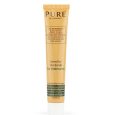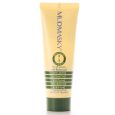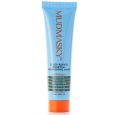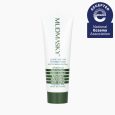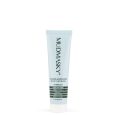What Is Good for Your Scalp After a Hair Transplant?
A hair transplant is a major decision that can restore your confidence and appearance. But the success of the procedure depends just as much on how you care for your scalp afterwards. The right products can help soothe the skin, protect new grafts, and support strong, healthy hair growth.
Whether your procedure took place in the UK or abroad, proper scalp care is essential in the weeks that follow.
Why so many people in the UK travel to Turkey for hair transplants
Thousands of people across the UK now travel to Turkey each year for affordable and expert hair transplants. With world-class clinics and experienced surgeons, Turkey has become one of the most trusted destinations for this procedure.
But while the surgery may take place in Istanbul or Antalya, the healing happens back home. This is why choosing the right scalp care after your return is one of the smartest things you can do to protect your investment. Without proper aftercare, you may risk poor results, longer healing time, and weakened hair follicles.
1. Hydration without oil
After a transplant, your scalp is often tight, itchy or dry. Many people reach for oils to relieve this feeling, but oils can block the newly placed follicles and slow down healing. Clinical studies show that product build-up can reduce oxygen levels and interfere with follicle function [1].
Instead, use a non-oily, fast-absorbing product that moisturises the scalp without forming a film. This allows the skin to breathe and recover more easily.
2. Vitamins that support healing and growth
Topical vitamins such as Pro-Vitamin B5, Vitamin C and Vitamin E are shown to reduce inflammation, hydrate the skin and promote healthier hair [2][3].
These vitamins can help:
-
Improve blood flow to the follicle
-
Calm irritated skin
-
Support the growth of new hair strands
Applying these nutrients directly to the scalp ensures they reach the root quickly and effectively.
3. Avoid thick creams and harsh ingredients
Heavy products and petroleum-based creams can trap bacteria and increase irritation. Likewise, alcohol, sulphates, silicones and artificial fragrance should be avoided after a transplant.
According to the International Society of Hair Restoration Surgery, only mild, skin-friendly products should be used during recovery [4].
4. Keep the scalp in balance
Your scalp has a natural pH of about 5. Disrupting this balance can lead to itching, discomfort or even infection. A pH-balanced product helps maintain the scalp’s protective barrier and supports its healthy function [5].
This is especially important in the UK, where colder weather and indoor heating can dry out the skin more quickly.
5. Focus on the root, not just the visible hair
The visible hair is only part of the story. After a transplant, the follicles beneath the surface need proper care to settle and begin growing. A scalp treatment that targets the root improves blood circulation, reduces inflammation and supports strong, long-lasting growth.
When the root is healthy, the hair that grows is more resilient and full.
Final thoughts
If you have had a hair transplant, whether in Manchester, London or Turkey, what you do next matters. Avoid heavy oils, strong chemicals and synthetic fragrance. Choose a non-oily, vitamin-rich, pH-balanced product designed to support healing and growth.
One example of a product developed with this in mind is the MUDMASKY Vitamin-Infused Scalp Serum, now recommended by hair surgeons in Turkey and used across Europe by those looking for clean and effective scalp care.
About the Author
Dr Lucas van der Meer is a trichologist and cosmetic science consultant based in Amsterdam. With more than 15 years of experience, he works with leading skincare and haircare brands across Europe to develop safe, effective and science-backed treatments.
Sources:
[1] Draelos, Z D. (2010). Hair cosmetics: An overview. Dermatologic Clinics, 28(1), 71 to 78.
[2] Lachapelle, J M. (1990). Vitamin E and skin irritations. Contact Dermatitis, 22(3), 174 to 179.
[3] Gehring, W. (2004). Topical use of panthenol in skin disorders. Journal of Dermatological Treatment, 15(1), 3 to 6.
[4] ISHRS.org. (2022). Postoperative Care Guidelines After Hair Transplantation. Retrieved from www.ishrs.org
[5] Lambers, H, et al. (2006). Natural skin surface pH is on average below 5, which is beneficial for its resident flora. International Journal of Cosmetic Science, 28(5), 359 to 370.
